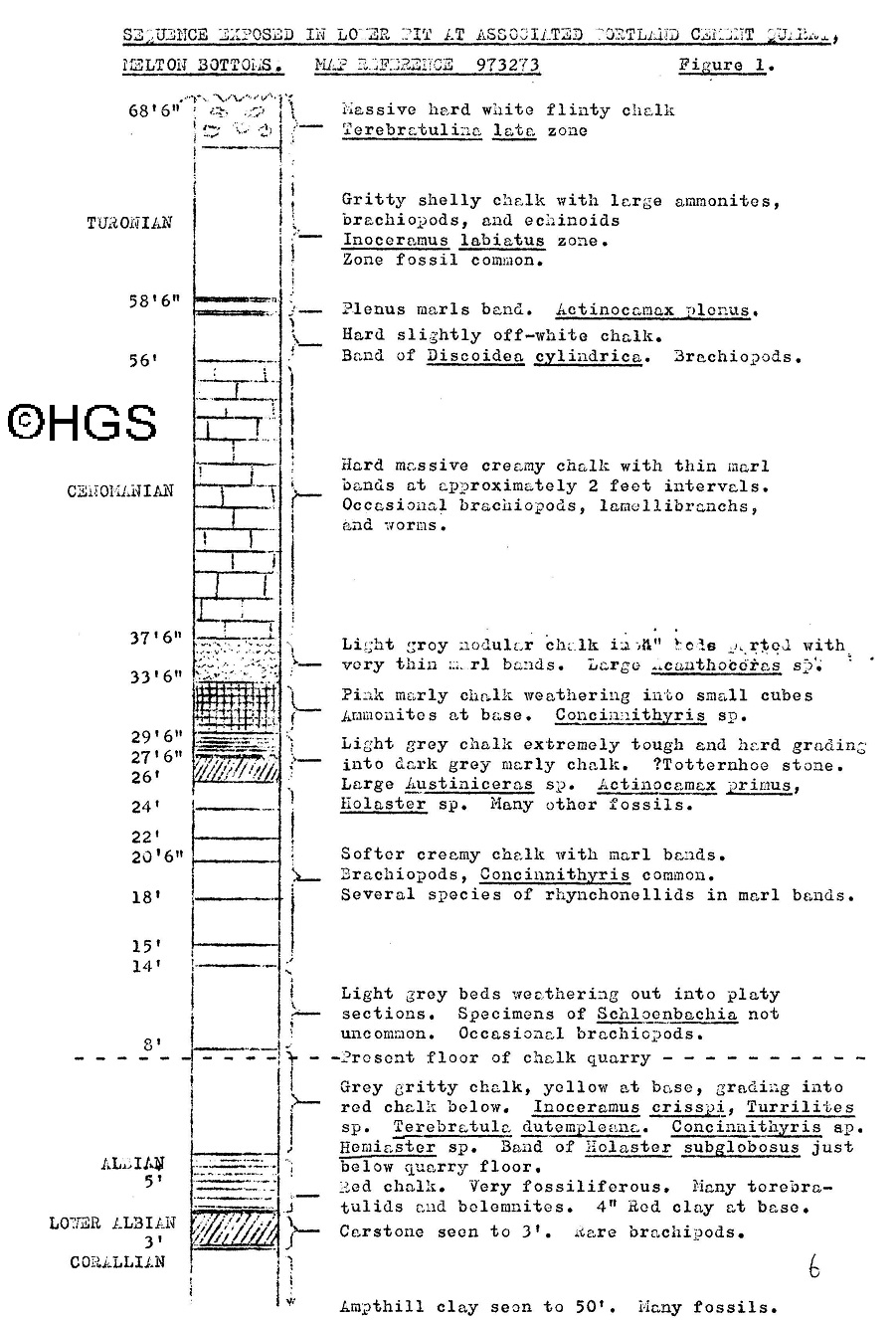

Humberside Geologist no 1
published 1975
Work was first started on the lower quarry at Melton Bottoms in 1958 and since that time extensive quarrying operations have taken place exposing in the process the following sequence.
STAGE ZONE
TURONIAN Inoceramus labiatus - 20 ft.
CENOMANIAN Holaster trecensis }
Holaster subglobosus } - 60 ft.
ALBIAN Upper Red Chalk
Middle Red Chalk
Lower Carstone
========================================= Unconformity
CORALLIAN Ampthill Clay Seen to 50 ft.
The Cretaceous deposits exposed in the lower quarry at Melton range from the Lower Albian Carstone up to the lower part of the Turonian Middle Chalk (I. labiatus zone) in what seems to be an unbroken sequence. Although these beds appear to be much thinner than their Southern counterparts, nevertheless they contain a considerable fauna, which can be compared with the fossil assemblages in Southern England, enabling the zonal divisions to be recognised.
The task of obtaining an accurate detailed measurement of the Cenomanian Chalk at Melton is extremely difficult as much distortion and faulting of the beds has occurred principlly due to the folding and squeezing out of the underlying clays southwards towards the River Humber. These movements are reflected upwards through the Lower Chalk and can clearly be seen in the displacement of the Plenus Marls band. The beds of pink chalk and Totternhoe stone are impersistant, varying in horizon and thickness possibly due to displacement of the clays below.
The section depicted in figure 1 gives a reasonably accurate measured section and shows the fossil assemblages), most of which are found in situ. Others were recovered from fallen blocks and related to the beds in the quarry face, this particularly applies to the Tottornhoe stone and the Pink Band. Fossils in the Cenomanian Chalk are not common although at least 50 different species have been found.
The Red Chalk is very fossiliferous and has yielded 25 different species. The Carstone, poorly fossiliferous, nevertheless has been shown to contain a sparse fauna of some nine species. There is great unconformity between the Carstone the Ampthill Clay, a considerable thicknesses of Upper Jurassic and Lower Cretaceous rocks being absent possible due to the effects of the Market Weighton structure.
The Ampthill Clay is about 150 ft thick. About 50 ft is exposed and yields many fossils including large body whorls of the ammonites Perisphinctes and Decipia along with the large oyster Gryphaea dilatata. A total of fourteen different species of fossils have been recorded.
During the visit to Melton Bottoms Lower Pit, the following fossils were found by members of the Society.
LOWER CHALK (Cenomanian)
Large ammonite in fragmentary condition (? Austiniceras sp)
RED CHALK (Albian)
Terebratula dutempleana
Neohibolites minimus
AMPTHILL CLAY (Coraliian)
Gryphaea dilatata
Pachyteuthis sp.
Perisphinctes sp.
Amoeboceras serratum

copyright Hull Geological Society 2021